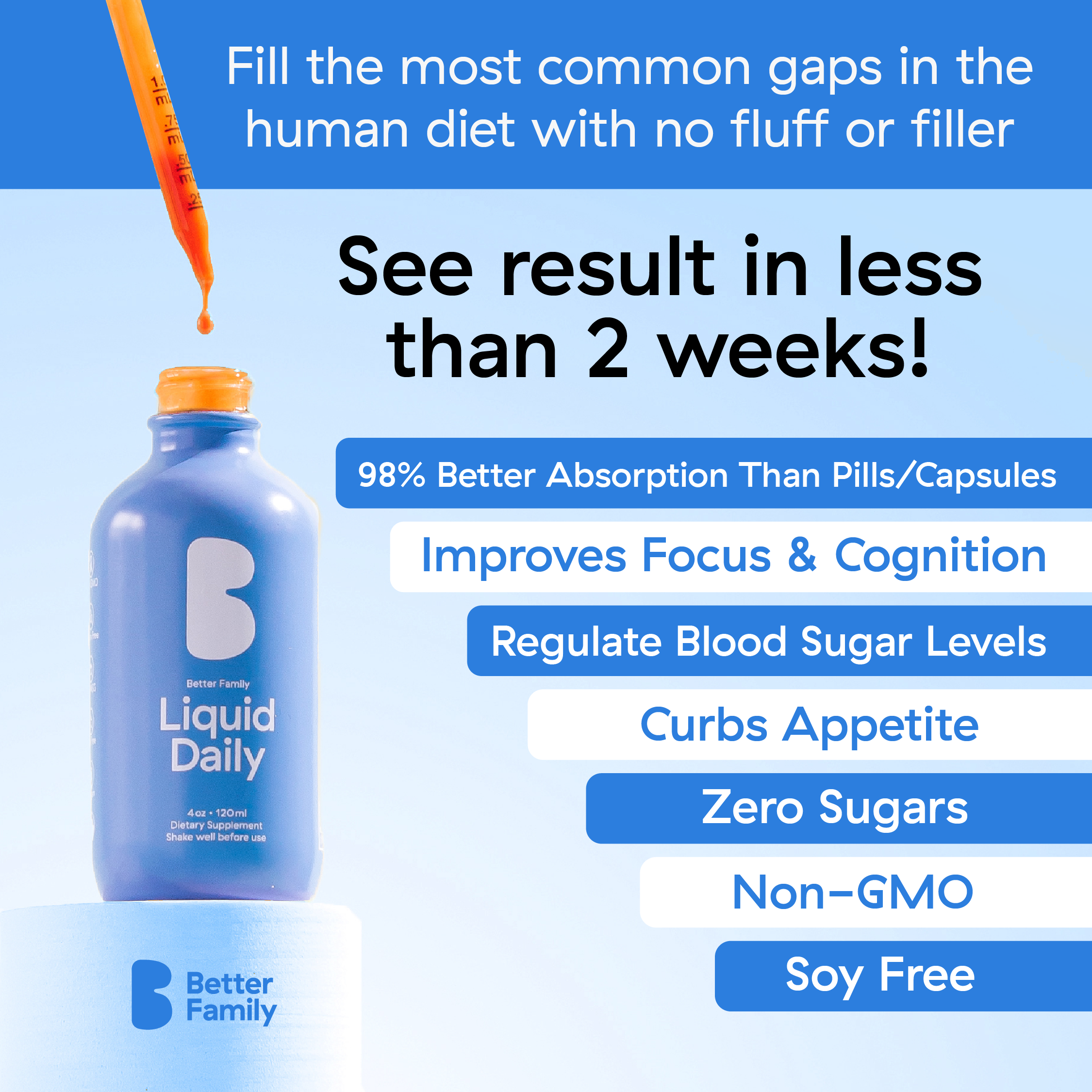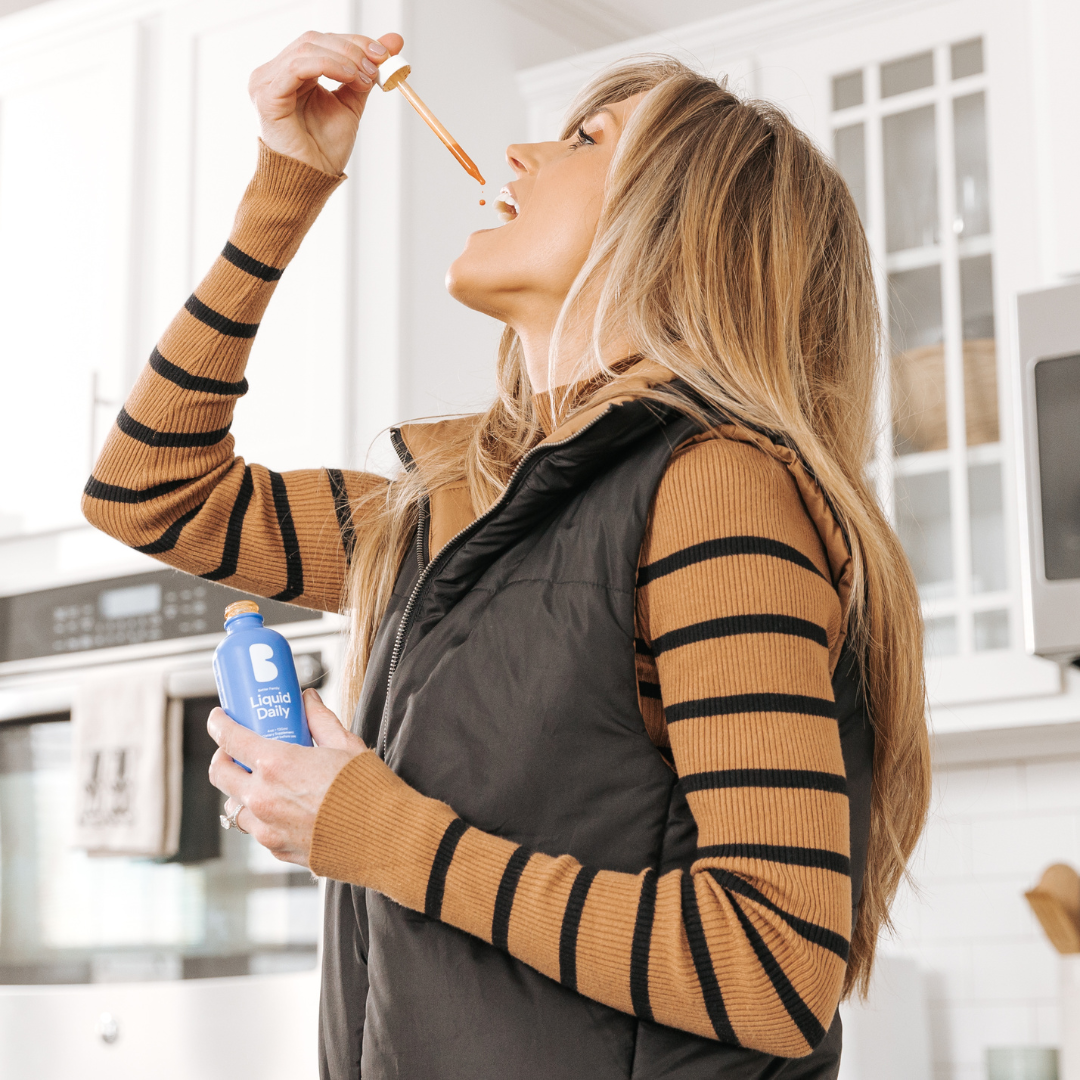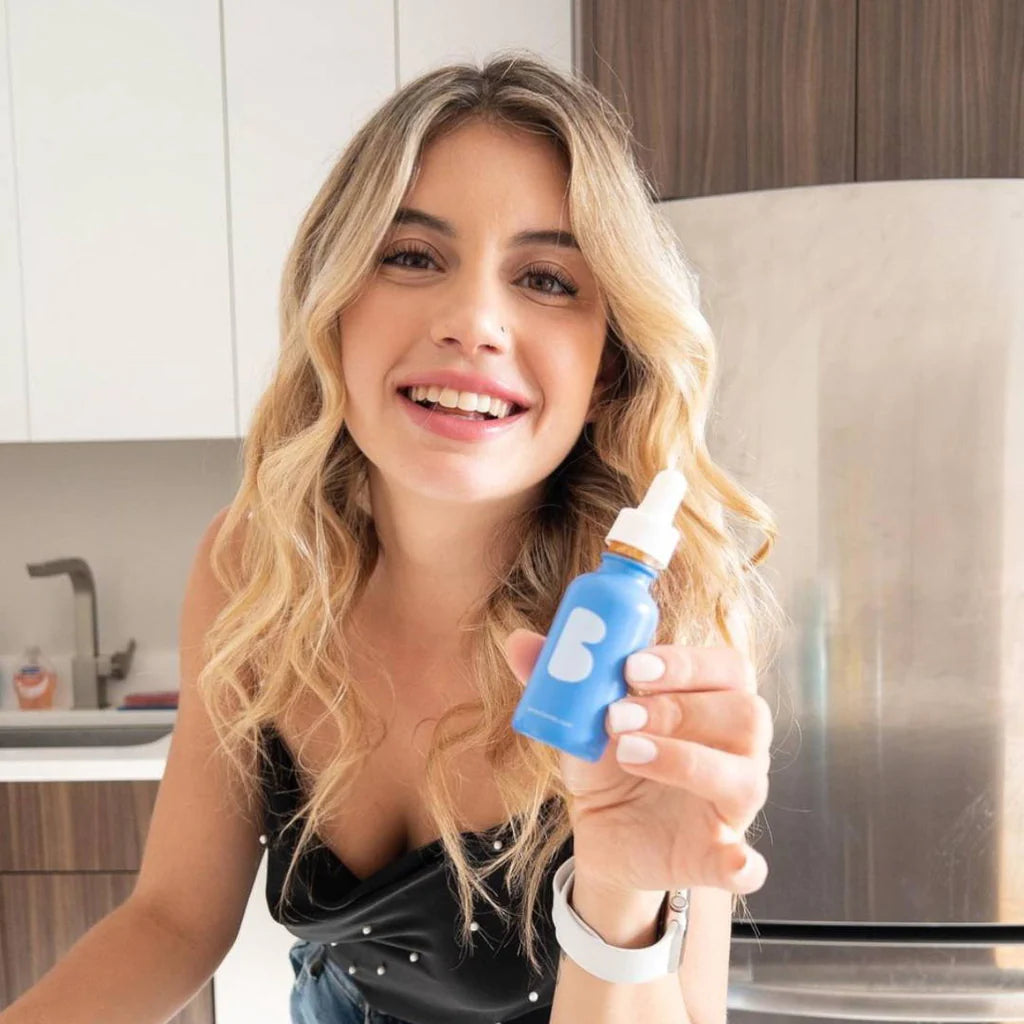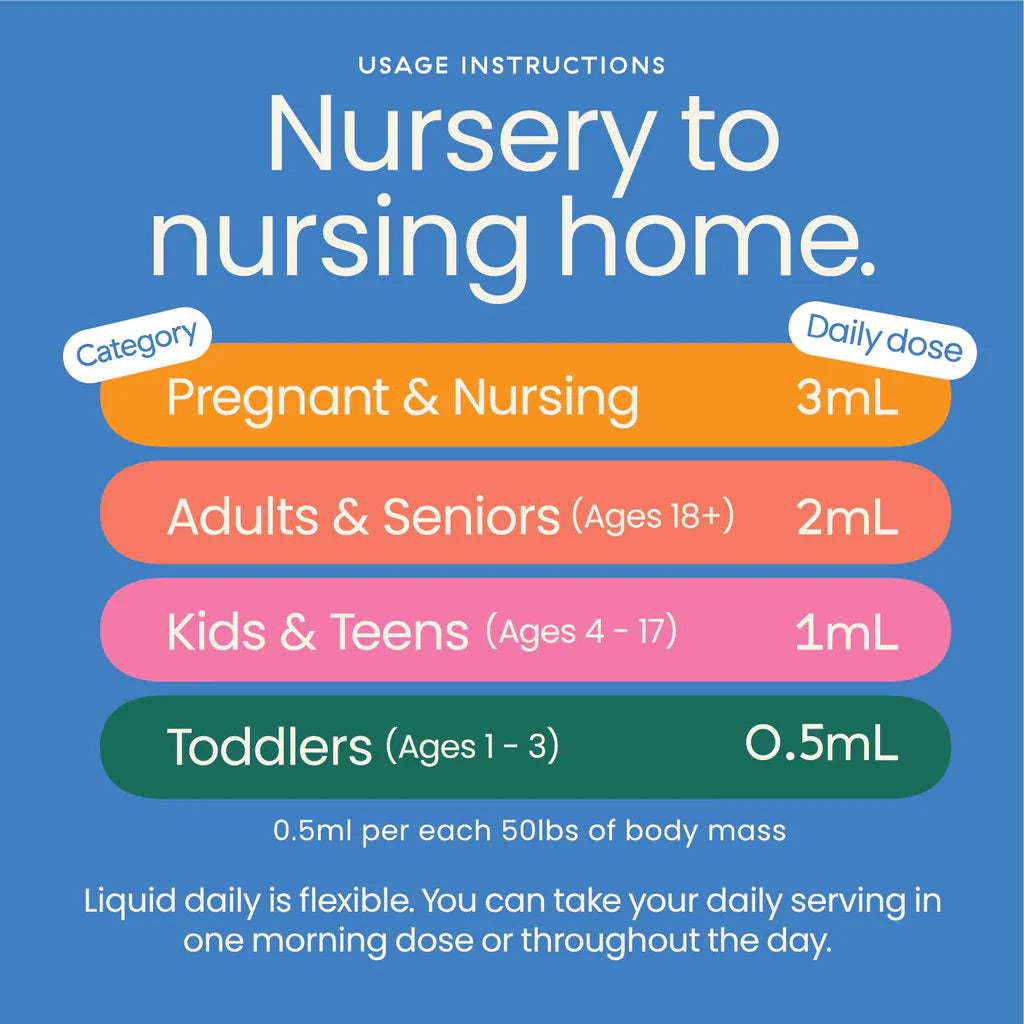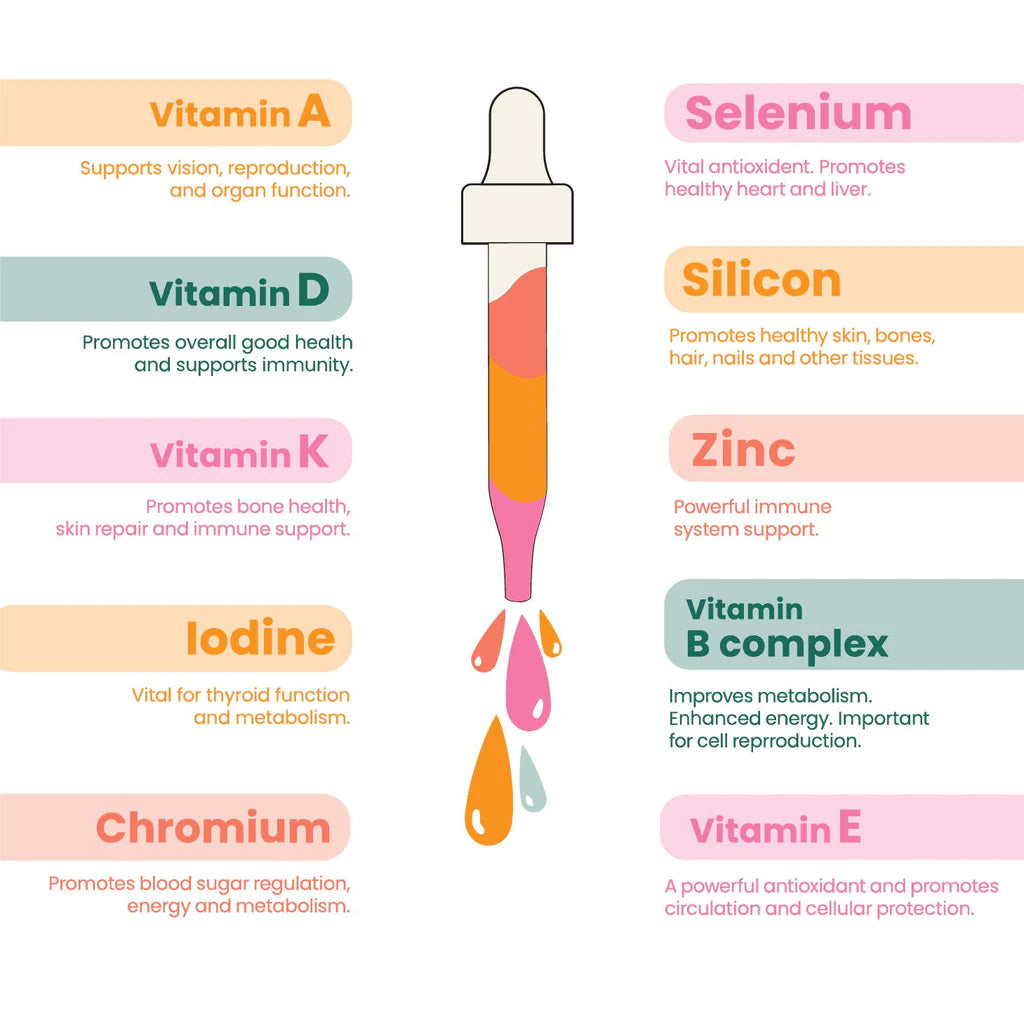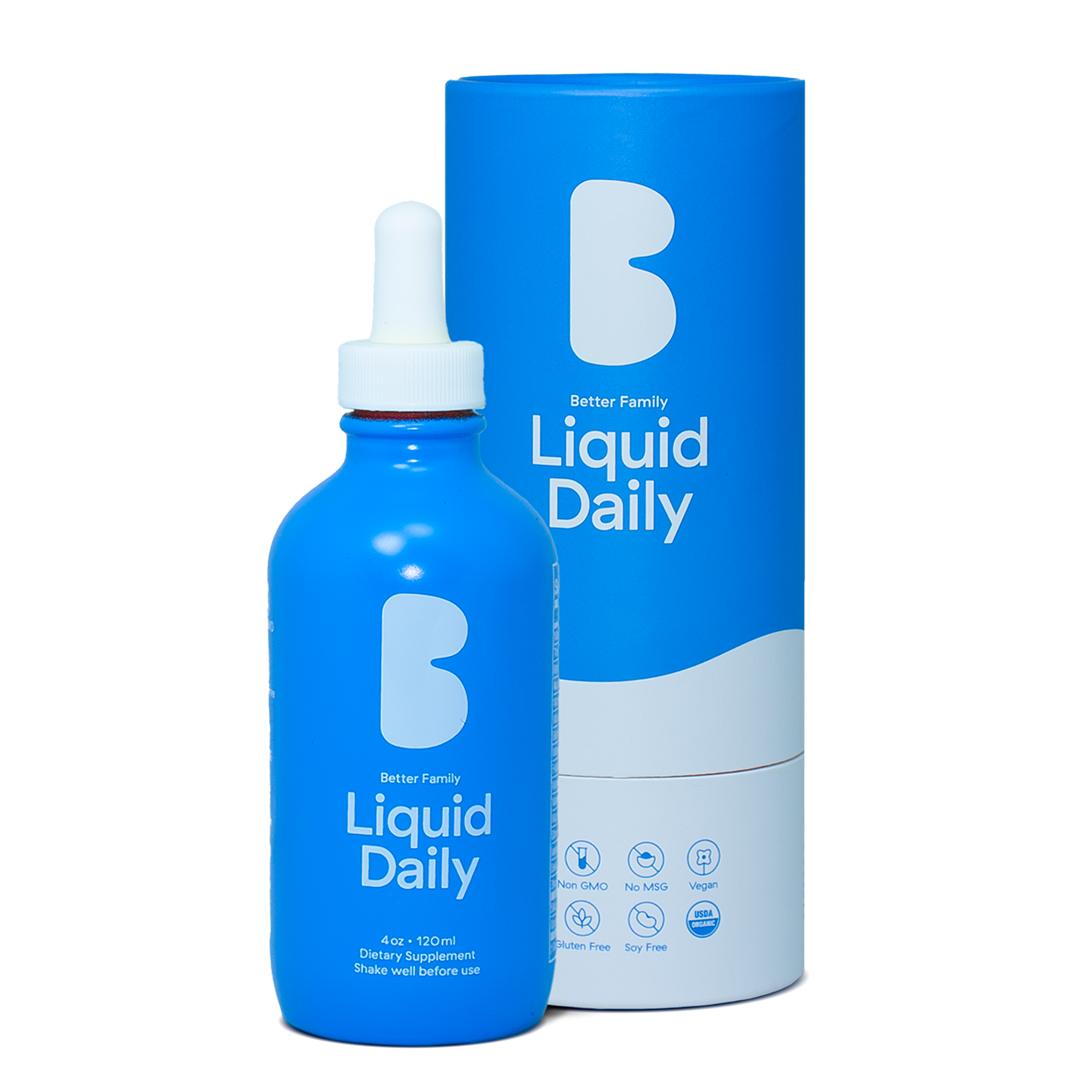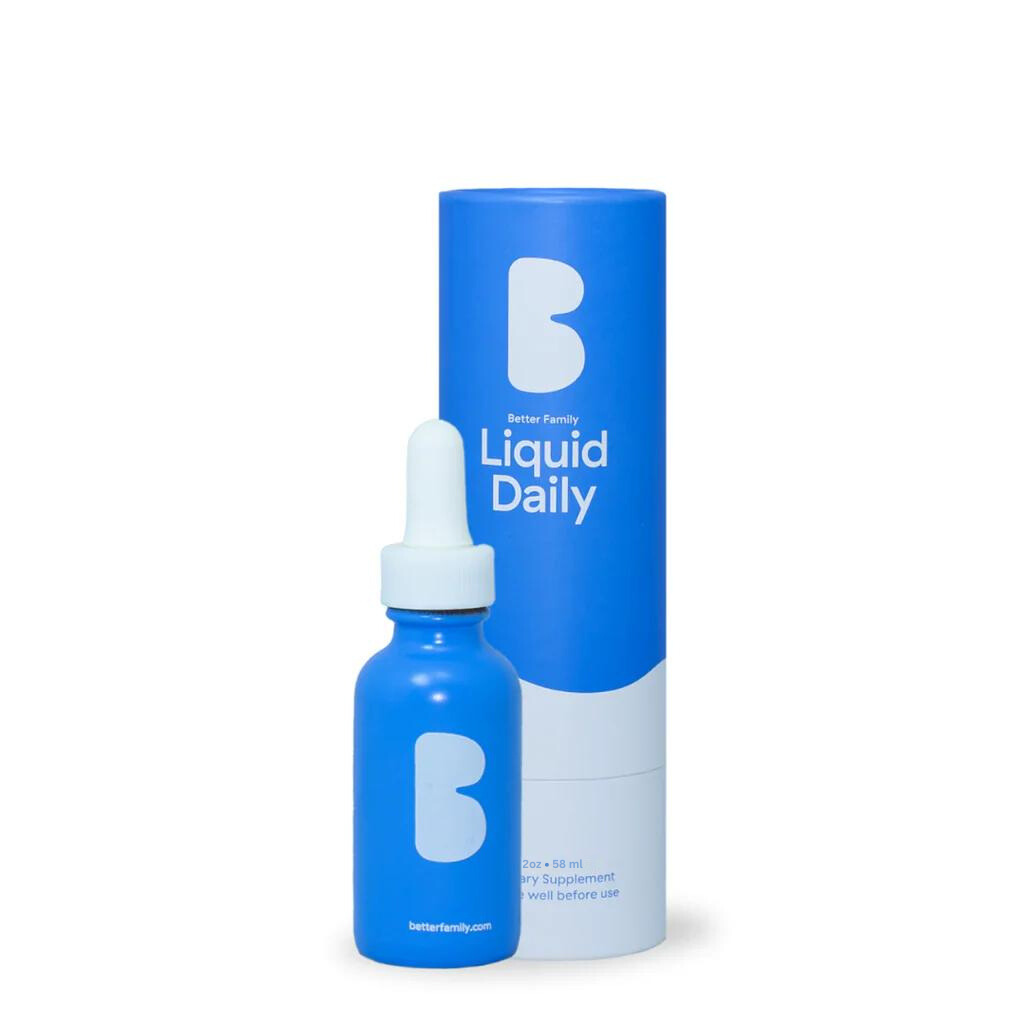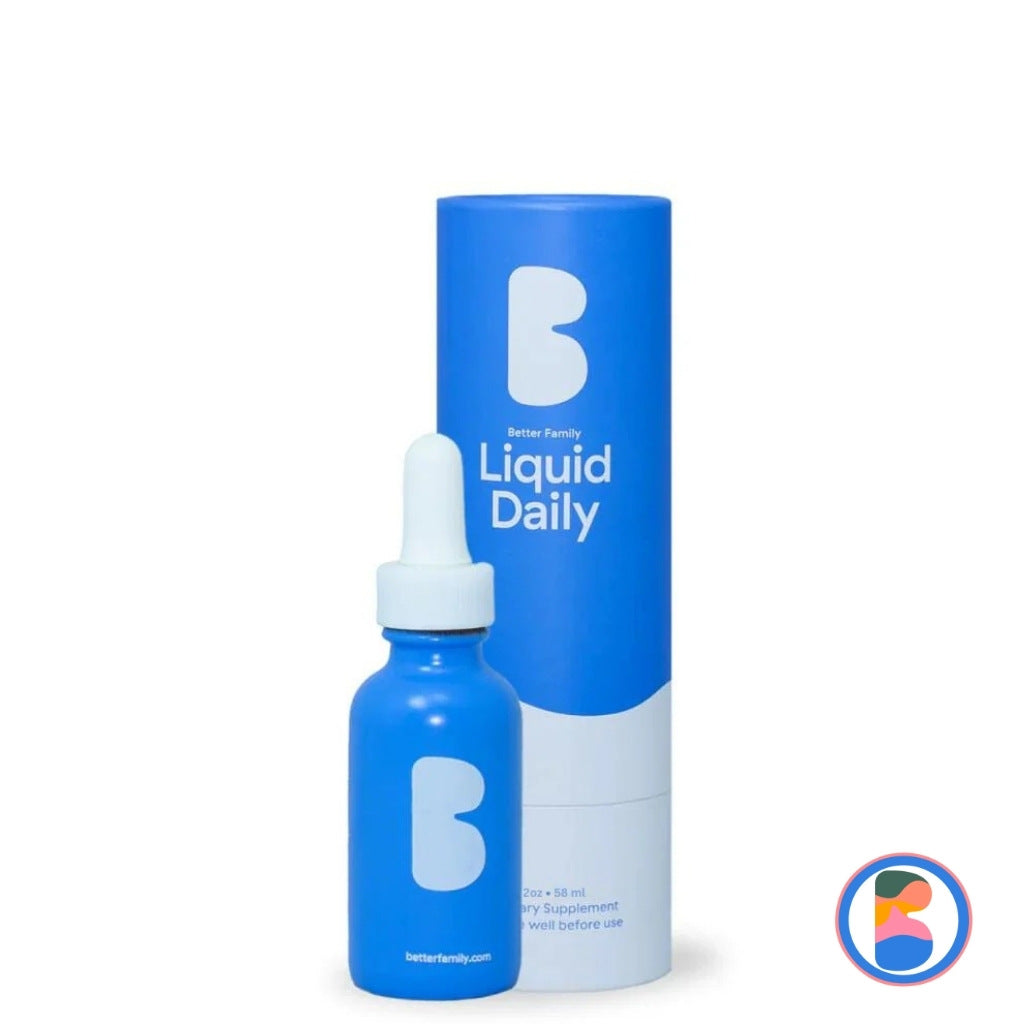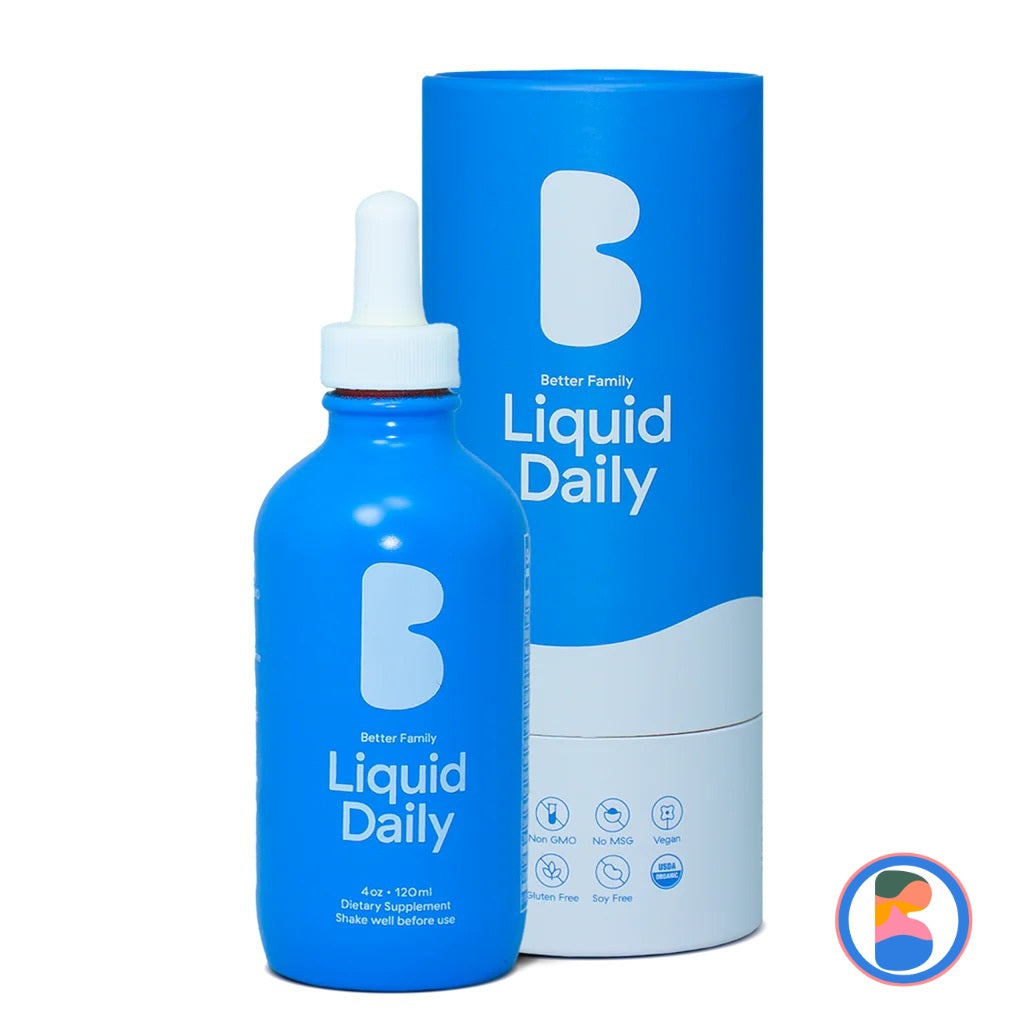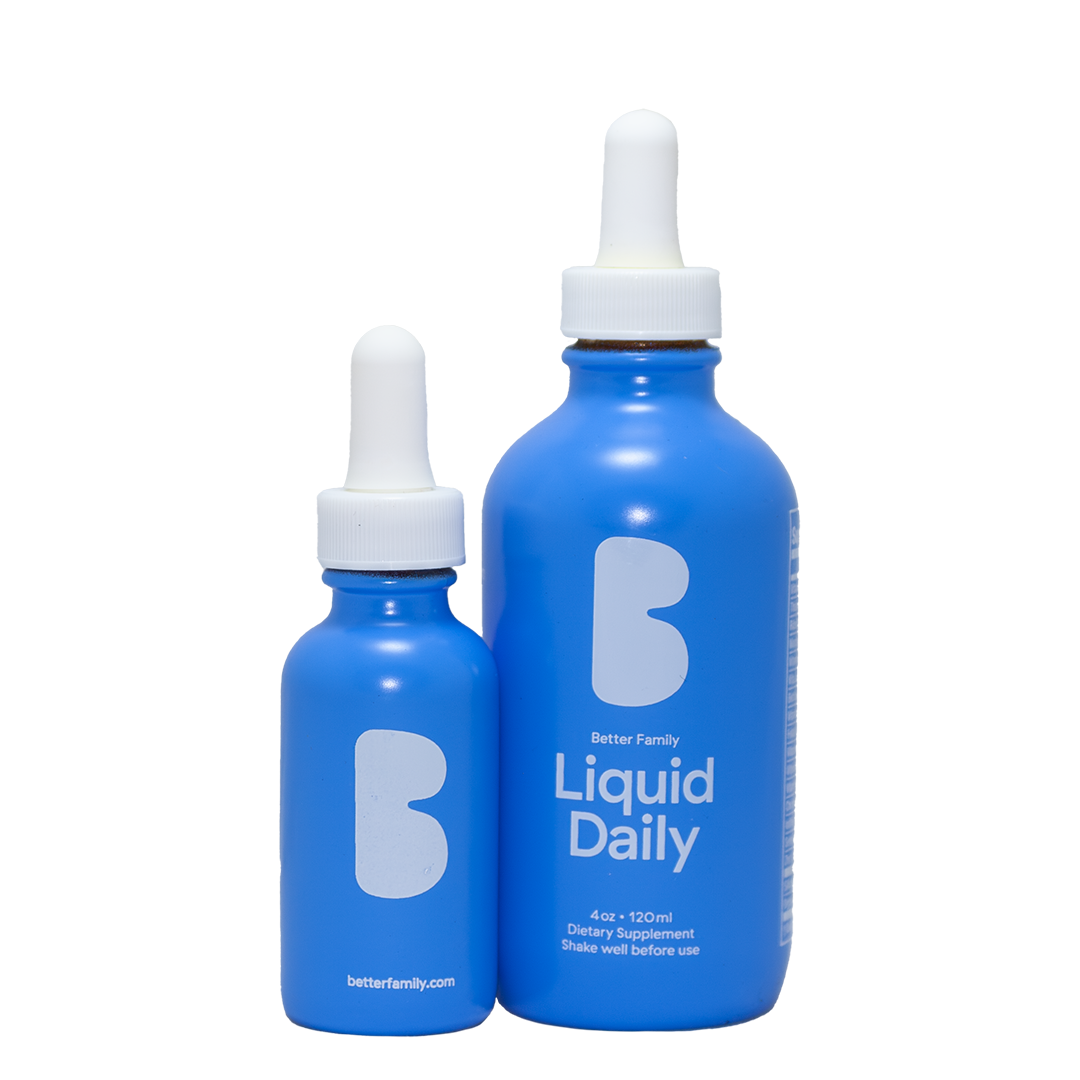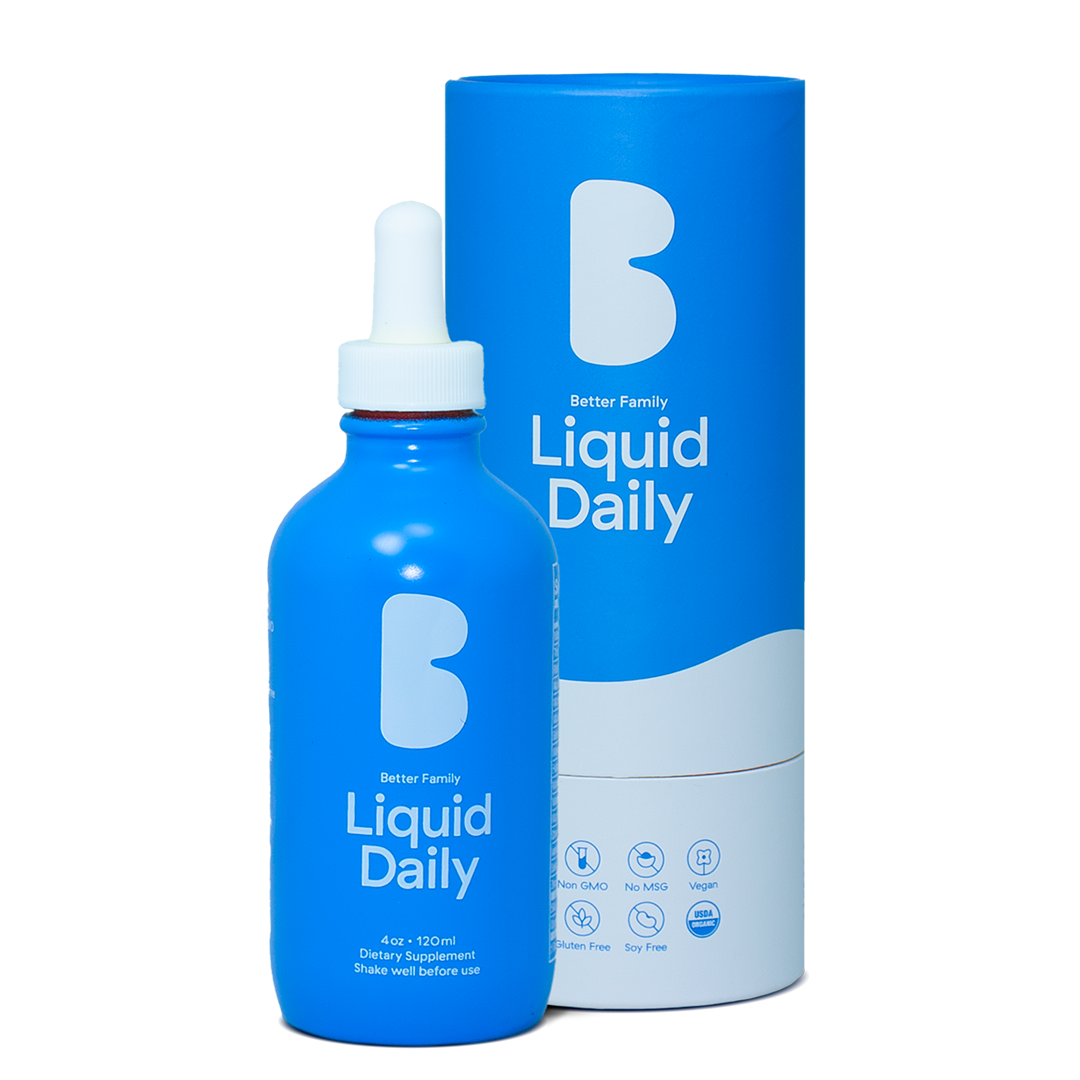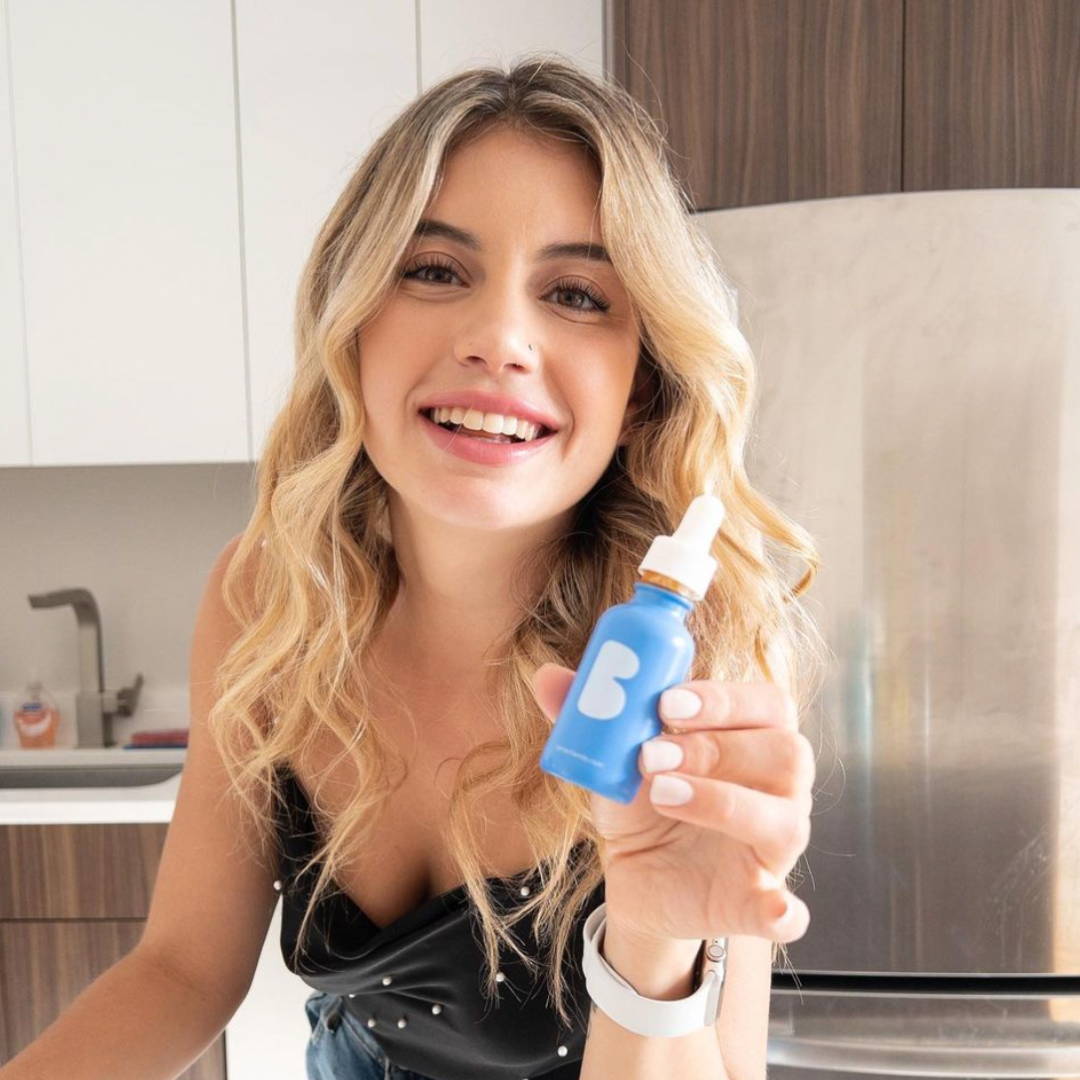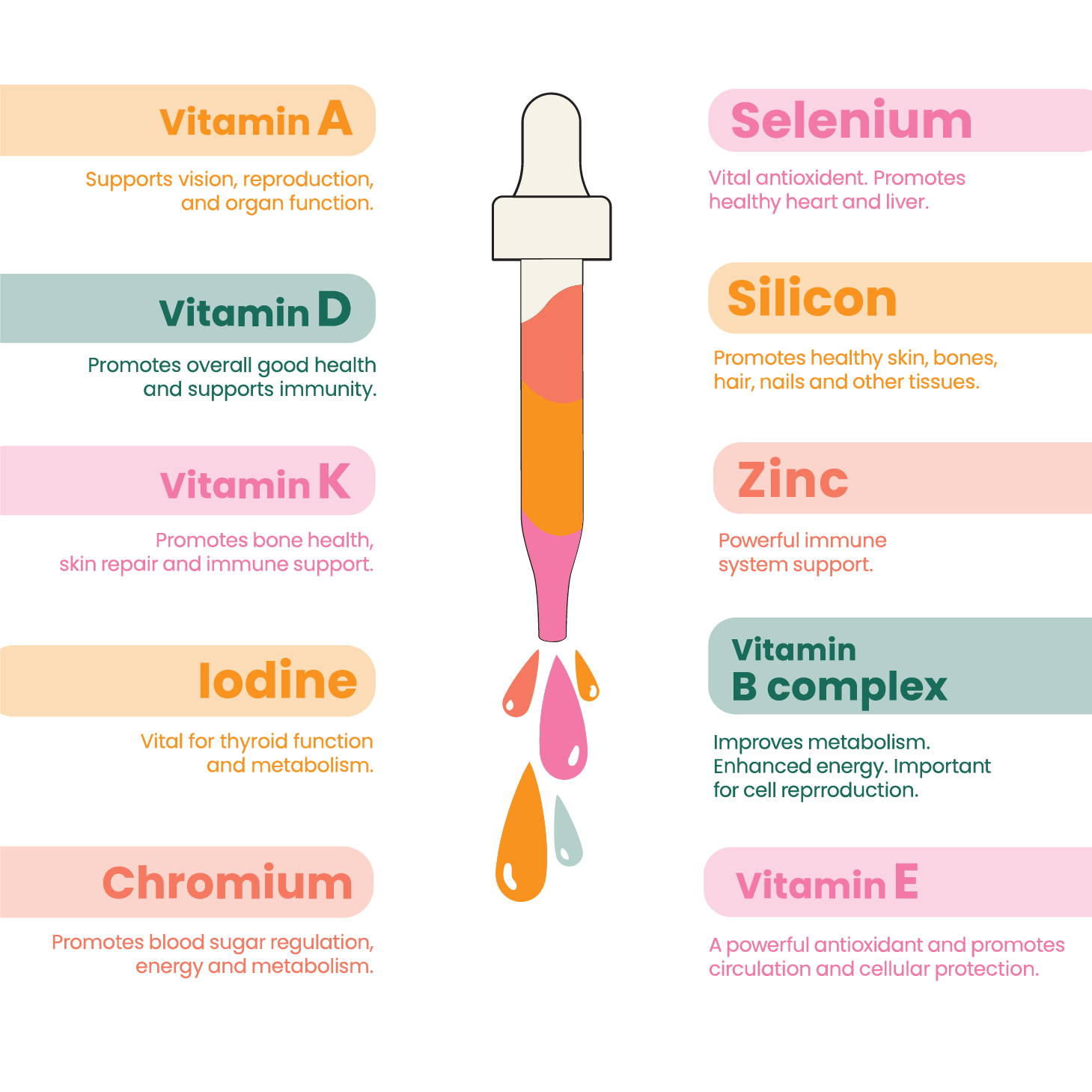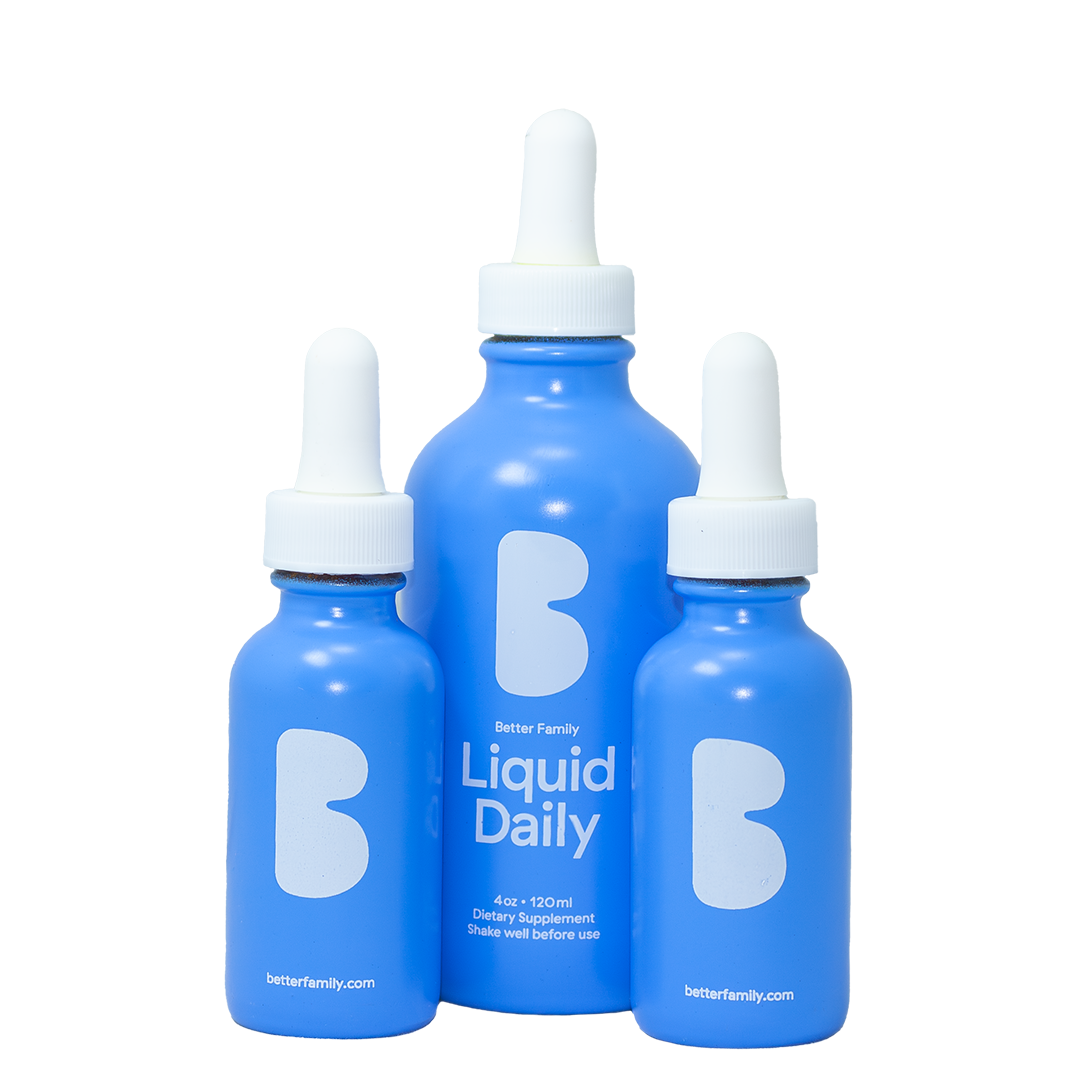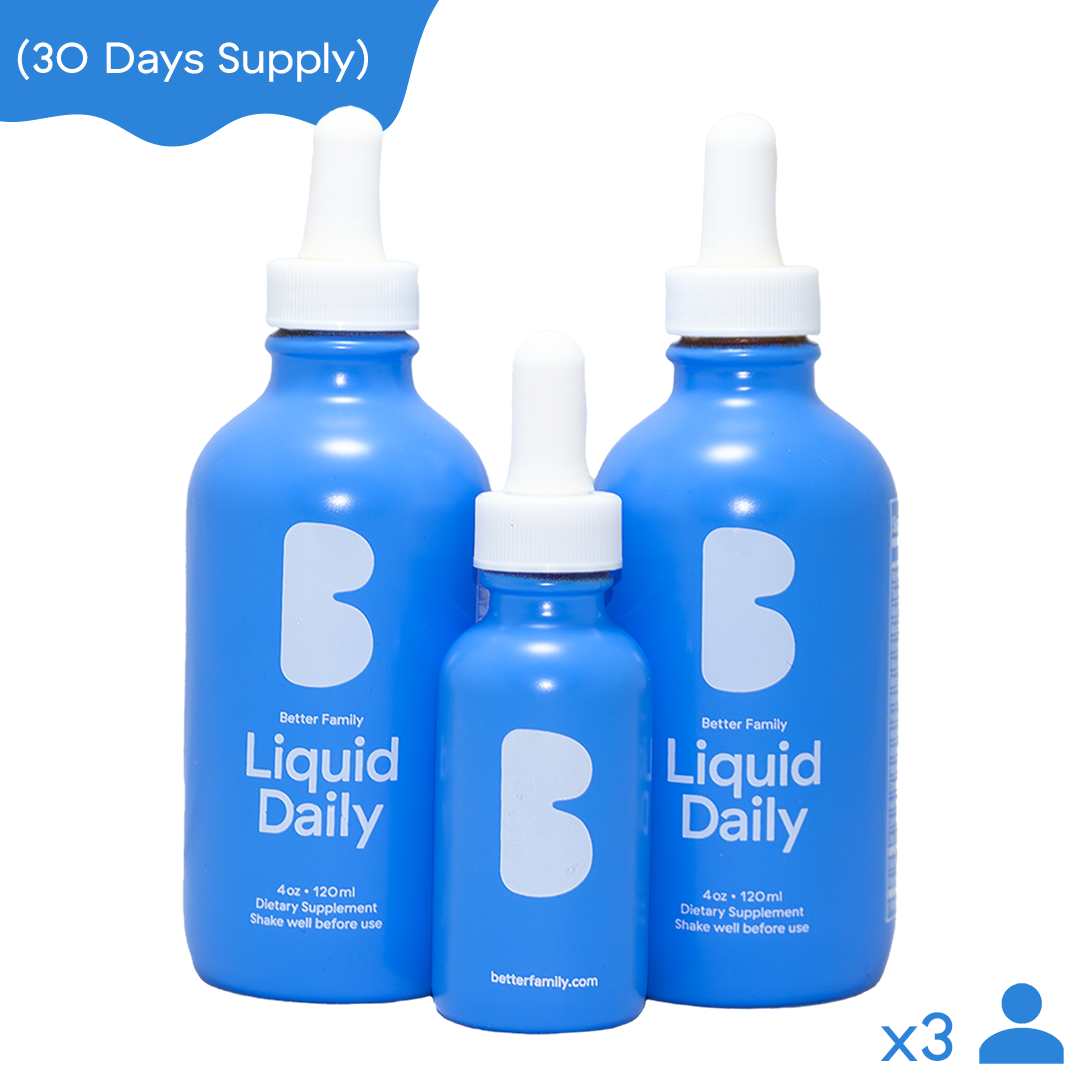Better Family Article Series
Liquid Multivitamins
The Absorption Advantage
This article series is brought to you by the team behind Liquid Daily: the better option for filling nutritional gaps in your household.
Liquid vs Pills or Chewables
Vitamins for Adults and Kids
Liquid Vitamin Delivery

Article Highlights
- The sublingual route, where medications are placed under the tongue, and absorbed directly into the bloodstream, offers several potential advantages that people might look for—like rapid onset of action.
- Sublingual absorption is generally considered to be rapid and efficient because we have great blood flow right under our tongues, and plenty of blood vessels which can readily accept certain drugs.
- Sublingual route advantages can be numerous over oral administration, primarily because we have a lot of blood vessels and blood flow right underneath our tongues, making this a perfect place to quickly absorb needed drugs.
How to Increase Sublingual Absorption
If you’re wondering how you can increase sublingual absorption, there are a lot of factors to consider. The sublingual route, where medications are placed under the tongue, and absorbed directly into the bloodstream, offers several potential advantages that people might look for—like rapid onset of action. In order to best understand how to increase sublingual absorption, it can be important to understand the mechanism of sublingual absorption, and exactly what it is.
You’ll want to begin by discussing any new supplement or medication you take with your doctor. Once you’ve gotten expert recommendations from a healthcare professional, and you’re ready to use a sublingual medication, it’s time to get started.
First, it is important to ensure that you’re using a proper technique. You’ll want to begin by placing the medication or supplement under your tongue, as this allows for direct contact with the rich network of blood vessels and capillaries located in the sublingual region. Keeping the medication under the tongue without swallowing for an adequate duration is crucial. You may try holding the medication for at least 1 to 2 minutes, or until it has completely dissolved or been absorbed.
Another strategy to enhance sublingual absorption is to maintain a suitable pH balance in your mouth. Certain medications, especially those that are weakly acidic or basic, can be best absorbed around certain pH levels.
"Incredible product. Has helped with sleeping and clarity at work. I would recommend for everyone. Very easy to use also."
- Paul E.
Experience the benefits of sublingual absorption with the lightly and naturally flavored liquid multivitamin that is packed with 20 essential vitamins and nutrients.
TRY LIQUID DAILYAnother step you may take is to try and avoid excessive salivation during sublingual administration, as excess saliva can dilute the medication and reduce its concentration. To minimize salivation, refrain from talking or swallowing unnecessarily during the absorption period.
Another potential factor is the role that blood flow can play in absorption. Gentle massage or slight movement of the tongue against the medication can help enhance blood flow, promoting better absorption of the drug. However, it is important to exercise caution and avoid vigorous movements that could lead to swallowing the medication accidentally.
Sublingual Administration
Sublingual administration is a route of administration. In other words, this classification doesn't refer to a type of medication as far as what class of drug it is or what effects it has on the body or mind. Rather, a route of administration describes how a drug is ingested and absorbed. In the case of sublingual administration, it involves placing medications under the tongue for absorption into the bloodstream.
This method offers several potential advantages over traditional oral administration. Orally administered drugs refer to one's which we swallow, like food or drink. We have a lot of blood vessels right under our tongues, and sublingual administration takes advantage of that fact by placing medicine where it can be readily absorbed. Compared to oral administration, sublingual delivery bypasses the digestive system and avoids the first-pass metabolism, often resulting in rapid onset of action and sometimes higher bioavailability.
The sublingual route has proven to be effective for a wide range of medications, including those used for pain relief, cardiovascular conditions, and hormone replacement therapy. This method is particularly useful for drugs that have poor oral bioavailability or those that undergo significant metabolism in the liver.
Oral mucosal absorption, which occurs through the mucous membranes in the mouth, contributes to the effectiveness of sublingual administration. The oral mucosa is highly vascularized, allowing for efficient absorption of medications directly into the bloodstream. This route of absorption bypasses the harsh environment of the stomach and the variability of gastrointestinal absorption.
Try Liquid Daily
Liquid Daily is the all-in-one liquid multivitamin that is great for adults and children.
- 20 Essential Vitamins & Minerals
- Advanced Liquid Absorption
- Zero sugars, fillers, or artificial flavorings
- Safe & Effective for Kids & Adults!
Sublingual Absorption Time
Sublingual absorption time refers to the duration it takes for medications placed under the tongue to be absorbed into the bloodstream. In other words, how long they take to “kick in,” or “work.” This absorption process can vary depending on several factors, including the specific medication, its formulation, and individual physiological differences.
Sublingual absorption is generally considered to be rapid and efficient because we have great blood flow right under our tongues, and plenty of blood vessels which can readily accept certain drugs. The rich network of blood vessels and capillaries allows for direct entry of medications into the bloodstream, bypassing the digestive system and avoiding first-pass metabolism. When it comes to sublingual vs oral, sublingual administration often leads to quicker onset of action compared to oral administration as a result.
The actual sublingual absorption time can range from a few minutes to around 30 minutes, depending on various factors. Factors such as the medication's solubility, particle size, and formulation play a role in determining the absorption rate. Some medications may dissolve or disintegrate quickly, facilitating faster absorption, while others may require more time.
It is important to follow the specific instructions provided by healthcare professionals or stated on the medication label regarding the recommended sublingual absorption time. Proper technique, such as keeping the medication under the tongue without swallowing, is also helpful for allowing sufficient time for absorption to occur.
Sublingual Vitamins
Sublingual vitamins refer to dietary supplements that are specifically formulated to be absorbed through the mucous membranes under the tongue. This method of administration is chosen to bypass the digestive system and enhance the bioavailability of vitamins. One commonly known sublingual vitamin is vitamin C, which is highly regarded for its immune-boosting properties.
Sublingual vitamin C offers potential advantages over traditional oral vitamin C supplements. By being absorbed directly into the bloodstream through the sublingual route, sublingual vitamin C may exhibit faster absorption and higher bioavailability. This can lead to more immediate effects and efficient utilization of the nutrient by the body.
When using sublingual vitamins, it is essential to follow the recommended instructions for optimal absorption. The duration for holding sublingual vitamins under the tongue can vary depending on the specific product. However, a general guideline is to hold the tablet or liquid under the tongue until it is completely dissolved or absorbed. This typically ranges from 1 to 5 minutes, but it is best to refer to the specific instructions provided by the manufacturer.
"The vitamins are tasty and the number of essential vitamins all in one liquid is fabulous!"
- Kevin M.
No more pills or sugary gummies. Simplify your routine and fill the gaps in your nutritional diet with Liquid Daily.
TRY LIQUID DAILYBuccal vs. Sublingual
When comparing buccal and sublingual routes of drug administration, there are some important distinctions to consider. Both routes involve placing medications in the mouth for absorption, but they differ in the specific regions of the mouth involved.
The sublingual route involves placing medications under the tongue for absorption through the highly vascularized sublingual region. On the other hand, the buccal route involves placing medications against the cheek or gum for absorption through the buccal mucosa.
Sublingual administration offers advantages such as rapid onset of action and avoidance of first-pass metabolism. However, there are also some disadvantages of sublingual routes. Since, as we discussed, a lot of salivation can dilute the medication and reduce its concentration, and accidentally swallowing the medication can limit its effectiveness.
When it comes to sublingual vs buccal absorption, both sublingual and buccal routes provide direct access to the bloodstream, bypassing the digestive system. However, the specific absorption rates may differ. Sublingual absorption is generally considered to be faster due to the rich network of blood vessels and capillaries in the sublingual region. Buccal absorption, on the other hand, may take longer due to a slightly thicker epithelial barrier in the buccal mucosa.
The buccal absorption time can vary depending on various factors, including the medication's properties and formulation. It is best to follow the specific instructions provided by healthcare professionals or stated on the medication label regarding the recommended buccal absorption time.
Sublingual Bioavailability
Sublingual bioavailability refers to the extent and rate at which a drug administered via the sublingual route is absorbed into the bloodstream and becomes available for therapeutic action. In other words, how readily can your body use the medicine? The sublingual route offers several advantages for achieving higher bioavailability compared to other routes of administration.
With great blood flow and a ton of blood vessels right under your tongue, the sublingual region allows for rapid absorption of medications into the bloodstream. This can result in a higher proportion of the drug reaching systemic circulation and exerting its intended effects. By avoiding the liver's metabolic processes, the sublingual route can often preserve the drug's potency and bioactivity.
The sublingual route's advantages, such as its rapid onset of action and avoidance of gastrointestinal degradation, contribute to improved bioavailability. With sublingual administration, the drug is directly absorbed through the highly vascularized sublingual mucosa, which contains numerous blood vessels and capillaries. This efficient absorption mechanism allows for quicker therapeutic effects and increased drug availability for systemic circulation.
However, it is important to note that the sublingual bioavailability can still be influenced by various factors, including the drug itself, the preparation or formula that the drug is in, and individual variations in each person’s mouth. Each medication and its specific characteristics must be considered to optimize sublingual bioavailability.
Liquid Multivitamin
Liquid Daily is the all-in-one liquid multivitamin that is nearly tasteless when added to any drink or juice!
- 20 Essential Vitamins & Minerals
- Advanced Liquid Absorption
- Zero sugars, fillers, or artificial flavorings
- USDA Organic
- Gluten-free, soy-free, AND non-GMO
Sublingual Absorption Rate
The sublingual absorption rate refers to the speed at which a medication or substance is absorbed through the sublingual route, where it is placed under the tongue. When it comes to sublingual absorption vs oral, sublingual absorption is generally known for its rapid and efficient nature, often offering faster absorption compared to oral administration.
Sublingual route advantages can be numerous over oral administration, primarily because we have a lot of blood vessels and blood flow right underneath our tongues, making this a perfect place to quickly absorb needed drugs. The direct contact with the highly vascularized sublingual mucosa allows medications to be absorbed directly into the bloodstream, bypassing the digestive system and the liver's first-pass metabolism. This results in a quicker onset of action and higher bioavailability.
Vitamin C, when administered sublingually, can demonstrate faster absorption compared to traditional oral supplementation. The sublingual route allows vitamin C to bypass the digestive system, where it may undergo degradation or altered absorption due to enzymatic processes. By directly entering the bloodstream, vitamin C sublingual absorption can result in more immediate availability and potential enhanced bioactivity.
It is important to note that the sublingual absorption rate can vary based on factors such as the specific medication or substance, and that you should always discuss taking any new medication, vitamin, or supplement first with your primary healthcare provider, such as your personal care physician. If you’re looking for a way to feel amazing, and make sure that your body is getting all of its needed nutrients, don’t forget to check out our liquid daily vitamin. With superior nutrient absorption, and ingredients designed to make you feel better, you can make sure you’re getting a daily dose of vital nutrients.
More articles from Better Family


